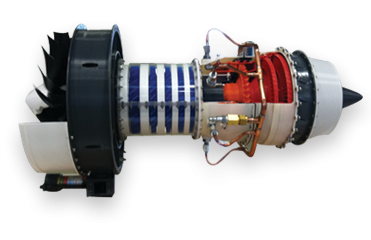University of Virginia
The University of Virginia’s mechanical and aerospace engineering program is one of the best in the United States, in part because of its commitment to hands-on learning. With six uPrint 3D Printers and a Fortus 3D Production System running every day, UVA’s rapid prototyping lab is where theory and imagination become objects that either make it or flop in the real world.
If creating models and mechanical devices constitutes a hands-on curriculum, UVA’s mechatronics projects could be called “hands- and minds-on” learning. Mechatronics combines mechanical, electronic, computer, software and control engineering with systems-design engineering to imagine and manufacture useful products.
The results are smart machines, like programmable printers. Students learned about stepper motors, brush motors, limit switches and software engineering to make eight mechatronic plotters out of 3D-printed parts, according to Dwight Dart, design lab engineer at UVA’s rapid prototyping lab.
Dart hopes more professors take advantage of 3D printing to illustrate how engineering disciplines fit together to create smarter machines. “It’s this kind of creativity and vision that makes the 3D printer an invaluable tool for our students,” he said. See a video of students using their plotters.
Harnessing Potential
In early 2010, the prototyping lab began using a single Stratasys uPrint 3D Printer as its sole source of model production. Faculty members immediately saw the potential for adding new 3D printing solutions to accommodate the 5,000-plus students who enroll in the School of Engineering and Applied Science classes each year. So a year later, UVA added five more uPrint machines and a Fortus 3D Production System.
To provide engineering graduates with the total package of theoretical and practical skills, the mechanical and aerospace engineering department gave students easy access to the 3D systems. Even those outside the engineering program taking introductory classes within the department get 3D printing experience.
Dart recommends the uPrint to other universities regularly, and is discussing whether UVA might purchase additional printers in the near future to address the high level of demand among students and faculty.
“With many students using the printers, we have enormous throughput and the machines are operating close to capacity at busy times during each semester,” Dart said.
Real Business
Developing students’ design skills beyond the theoretical is critical as employers increasingly seek graduates with applied, tested skills. “3D CAD modeling and theoretical models are only part of the process — there must be a concrete application for the concepts students are learning,” Dart said. Emerging engineers must embrace the challenges involved in building functional parts — mating, press fits, tolerances and threading, for example.
To bring well prepared graduates into the business world, UVA has brought a real business into its curriculum. The school’s state-of-the-art prototyping lab resulted from a $2 million grant from Rolls Royce as part of the school’s partnership with the Commonwealth Center for Advanced Manufacturing (CCAM). CCAM brings together best-in-class manufacturers and Virginia’s top higher-education institutions (University of Virginia, Virginia Tech and Virginia State University) to deliver new production-ready solutions to factories. “Our partners at Rolls Royce have praised UVA graduates for immediately understanding crucial design concepts and knowing how to fix design errors,” Dart said. “The Stratasys 3D Printer is a huge part of how we teach students to build smart machines.”
Recently, students used Stratasys machines to create a scale model of an entire Rolls Royce jet engine, powered by compressed air, with all of the functional parts found in a real engine. Each student was responsible for a part of the assembly, which fit together within extremely tight tolerances.
“The Rolls Royce project gave students a chance to see an entire design and engineering project through from beginning to end, and we couldn’t have accomplished that level of realism without the Stratasys 3D Printer,” Dart said.




